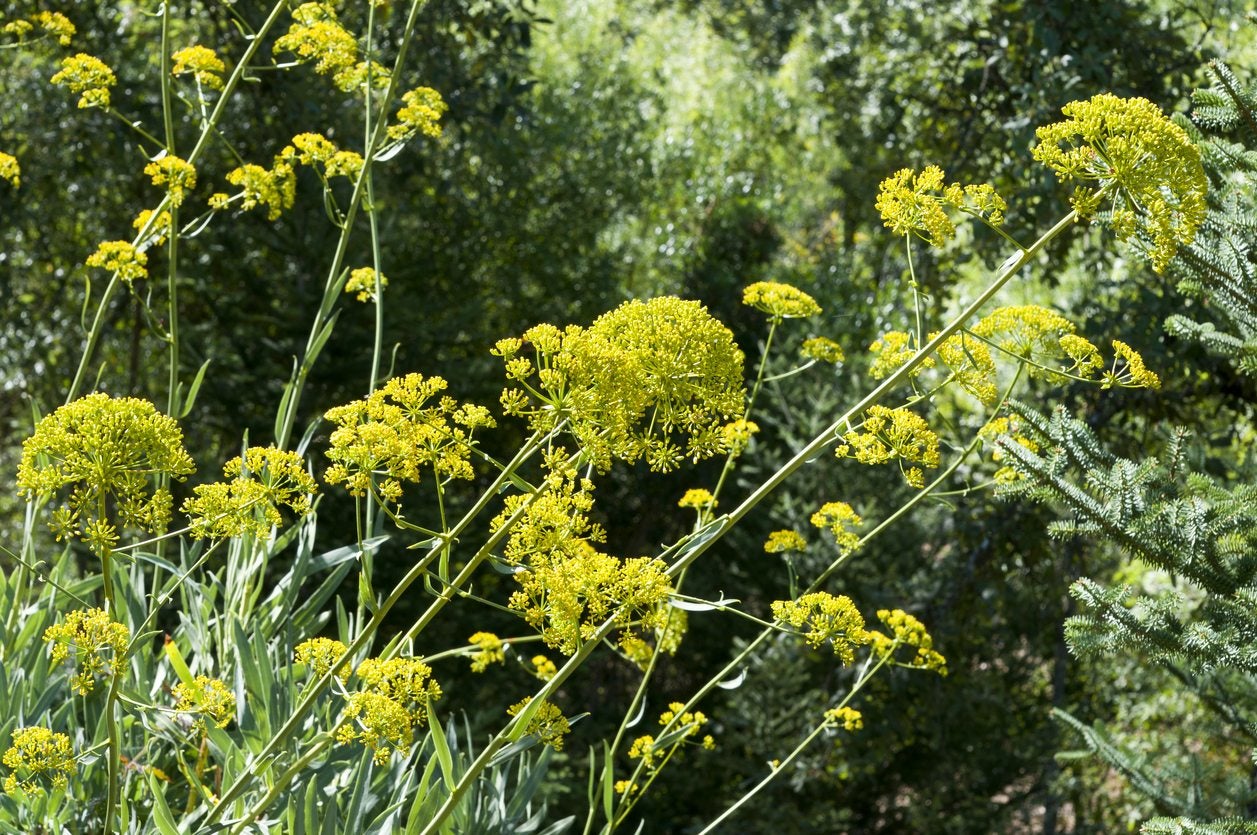What Is Bupleurum: How To Grow Bupleurum Herb Plants


Combining uses for plants in the garden brings a utilitarian and beautification aspect to the landscape. An example might be planting culinary or medicinal herbs that also bloom or have appealing foliage. Bupleurum is an excellent plant for such use. What is bupleurum? It is a plant with a long history as an Asian herbal medicine and is a lovely foil for many other types of plants. Growing bupleurum in the garden bed brings in traditional natural medicine paired with unmatched annual color.
What is Bupleurum?
Although bupleurum is from Asia, it can't really be classed as a cool-season or warm-season annual. The plant is hardy in USDA zones 3 to 10, a pretty broad spectrum for a leafy herb. Most gardeners across North America and beyond can learn how to grow bupleurum and keep a ready supply of this useful herb on hand, either fresh or dried. Once a common name among Chinese herb plant info, Bupleurum gibraltaricum, or hare's ear, grows readily from seed. It can be recognized by bluish green foliage which resembles eucalyptus leaves. The flowers are useful in a cut garden and arrive in yellowish green umbels. Most species grow about 24 inches tall (61 cm.) with a 12 inch spread (31 cm.). Although the plant is generally considered to be annual, it can be a short-lived perennial in frost-free zones. The plant has a dense, compact habit that contrasts nicely with other herbs or when added to the cut flower garden. The herb blooms from midsummer all the way into fall and the first frost. Bupleurum is closely related to fennel, dill, and other umbel-forming plants.
Chinese Herb Plant Info
Unless you are a long-time herbalist or licensed practitioner of herbal medicine, it is inadvisable to try to medicate yourself with this herb. However, it has been used for centuries to relieve such problems as arthritis, menopause, skin ailments, some ulcers, and mental disorders. It has even been found to have use in calming the withdrawal of steroid use. Much of the plant's power comes from the high level of saponins found concentrated in the roots. Expert advice warns against side effects such as dizziness and headaches. Most of us wouldn't be growing bupleurum for such uses, but it is nonetheless an attractive addition to any landscape situation.
How to Grow Bupleurum
Seed germination can be capricious, but starting the herb from seed is the most common method. Sow seed in a well-draining, prepared garden bed when soil temperatures are at least 60 degrees F. (16 C.). Surface sow and cover with a light dusting of soil. Keep moderately moist until germination, usually in 14 days. Thin plants until they are spaced 12 inches apart (31 cm). In frost-free zones, divide the plant in spring. Bupleurum needs little extra food and has few insect and pest issues. As a cut flower it lasts for seven to ten days. This lovely plant is underused but the care of bupleurum plants is relatively easy and low maintenance. Disclaimer: The contents of this article are for educational and gardening purposes only. Before using ANY herb or plant for medicinal purposes, please consult a physician or a medical herbalist for advice.
Gardening tips, videos, info and more delivered right to your inbox!
Sign up for the Gardening Know How newsletter today and receive a free copy of our e-book "How to Grow Delicious Tomatoes".

Bonnie Grant is a professional landscaper with a Certification in Urban Gardening. She has been gardening and writing for 15 years. A former professional chef, she has a passion for edible landscaping.
-
 8 Perfect Flowers To Plant With Tomatoes To Boost Yields & Banish Pests
8 Perfect Flowers To Plant With Tomatoes To Boost Yields & Banish PestsDon’t forget flowers when choosing companion plants for your tomato beds or pots. These pretty, fragrant blooms add beauty but are also highly beneficial.
By Mary Ellen Ellis
-
 Want The Longest Lasting Hydrangea Flowers? Grow These 8 Panicle Hydrangea Varieties
Want The Longest Lasting Hydrangea Flowers? Grow These 8 Panicle Hydrangea VarietiesFor ornamental shrubs that deliver the longest flowering seasons with plush blooms and delicate hues, these panicle hydrangea varieties are essential in your yard
By Tonya Barnett